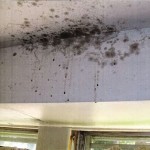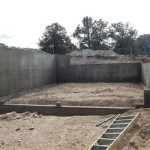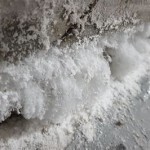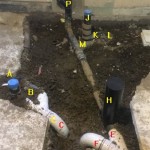Should You Seal Your Concrete Basement Floor?
The question of whether to seal a concrete basement floor permeates homeowner discussions, sparking debate among those seeking to protect their homes from moisture damage and enhance livability. Addressing this question requires a thorough understanding of concrete's inherent properties, the typical basement environment, and the potential benefits and drawbacks of sealing. This article will explore these factors to provide a comprehensive assessment that will aid in making an informed decision.
Concrete, while appearing solid, is a porous material. This porosity allows moisture to permeate the concrete, drawn in through capillary action. This moisture can originate from several sources: groundwater seeping through the foundation, rainwater runoff entering through cracks or inadequate drainage, and even condensation forming on the concrete surface. The presence of moisture within the concrete can lead to various problems, ranging from minor inconveniences like musty odors to more severe issues like mold growth and structural damage to the foundation itself.
Basements, by their nature, tend to be more humid environments than the upper levels of a home. Situated below ground level, they are often cooler and less well-ventilated, creating conditions conducive to moisture accumulation. This inherent humidity makes them particularly susceptible to the negative effects of moisture intrusion into the concrete floor. Therefore, the consideration of sealing a concrete basement floor should be approached with a clear understanding of the specific conditions present in that basement.
Before deciding whether to proceed with sealing, it is crucial to accurately assess the moisture levels in the basement. Several methods can be employed for this purpose. A simple test involves taping a square of plastic sheeting to the concrete floor for 24-48 hours. If condensation forms underneath the plastic, it indicates the presence of moisture migrating through the concrete. More sophisticated methods involve using a moisture meter to directly measure the moisture content of the concrete. Regular monitoring of humidity levels within the basement, using a hygrometer, can also provide valuable insights into the overall moisture environment.
Understanding the Potential Benefits of Sealing
Sealing a concrete basement floor aims to create a barrier that prevents moisture from passing through the concrete. This barrier can offer several potential benefits, contributing to a healthier and more comfortable living environment. One of the primary benefits is the reduction of moisture-related problems, such as mold and mildew growth. By preventing moisture from entering the concrete, the sealant inhibits the conditions necessary for microbial growth, leading to improved air quality and a reduced risk of allergic reactions or respiratory issues.
Another significant benefit is the protection of flooring materials. If the basement floor is covered with carpet, tile, or other flooring, moisture seeping through the concrete can damage these materials, leading to costly repairs or replacements. Sealing the concrete creates a protective layer that prevents moisture from reaching the flooring, extending its lifespan and preserving its aesthetic appeal. Furthermore, sealing can protect items stored in the basement from moisture damage, particularly cardboard boxes and other materials that readily absorb moisture.
Sealing can also reduce the incidence of musty odors often associated with damp basements. These odors are typically caused by mold and mildew growth, which, as previously mentioned, can be mitigated by sealing the concrete. A sealed floor is also easier to clean and maintain. The sealant creates a smooth, non-porous surface that resists stains and spills, making it easier to wipe up messes and keep the floor looking clean.
Finally, some sealants can enhance the appearance of the concrete floor, particularly those that add a glossy or decorative finish. This can improve the overall aesthetic appeal of the basement, making it a more attractive and inviting space. Some sealants also offer improved resistance to abrasion and wear, protecting the concrete from damage caused by foot traffic and other activities.
Examining the Potential Drawbacks and Considerations
While sealing a concrete basement floor offers numerous potential benefits, it is crucial to acknowledge the potential drawbacks and considerations before proceeding. One of the most significant potential drawbacks is the possibility of trapping moisture within the concrete if the sealant is applied incorrectly or if the concrete is already saturated with moisture. This trapped moisture can lead to a phenomenon known as hydrostatic pressure, where water pressure builds up beneath the sealant, potentially causing it to blister, peel, or crack. This can exacerbate moisture problems and create even more extensive damage.
The effectiveness of a sealant depends heavily on proper application. Thorough surface preparation is essential, including cleaning the concrete to remove any dirt, dust, grease, or existing coatings. The concrete must also be completely dry before applying the sealant. Following the manufacturer's instructions carefully is crucial to ensure proper adhesion and performance. Inadequate preparation or improper application can result in premature failure of the sealant, rendering it ineffective and potentially causing further damage.
Furthermore, the choice of sealant is critical. Different types of sealants offer varying levels of protection and have different application requirements. Acrylic sealants are typically less expensive and easier to apply, but they may not provide the same level of protection against moisture as epoxy or urethane sealants. Epoxy and urethane sealants are more durable and offer better moisture resistance, but they are also more expensive and may require professional installation. Selecting the appropriate sealant for the specific conditions of the basement is essential for achieving optimal results.
Another consideration is the potential for efflorescence. Efflorescence is a white, powdery deposit that can form on the surface of concrete when moisture dissolves salts within the concrete and carries them to the surface. Sealing the concrete can sometimes exacerbate efflorescence by trapping moisture and salts beneath the sealant, leading to a buildup of deposits that can eventually damage the sealant. While efflorescence is not inherently harmful, it can be unsightly and can indicate underlying moisture problems.
Alternative Approaches to Moisture Control
Sealing the concrete floor is not the only approach to controlling moisture in a basement. In some cases, alternative or complementary strategies may be more effective or more appropriate. Improving ventilation is often a simple and effective way to reduce humidity levels in the basement. This can be achieved by opening windows or using a dehumidifier to remove excess moisture from the air. Proper ventilation helps to prevent condensation from forming on the concrete and other surfaces, reducing the risk of mold and mildew growth.
Ensuring proper drainage around the foundation is also crucial for preventing moisture from entering the basement. This involves ensuring that gutters and downspouts are functioning correctly and directing water away from the foundation. The ground around the foundation should also slope away from the house to prevent water from pooling near the foundation walls. Addressing any cracks or leaks in the foundation walls is also essential for preventing water from seeping into the basement.
Installing a vapor barrier beneath the concrete slab during construction is another effective way to prevent moisture from rising through the concrete. A vapor barrier is a sheet of impermeable material, typically polyethylene plastic, that is placed between the soil and the concrete slab. This barrier prevents moisture from migrating upwards through the concrete, reducing the risk of moisture-related problems. If a vapor barrier was not installed during construction, it may be possible to install one on top of the existing concrete floor before installing flooring materials.
In some cases, addressing the source of the moisture problem may be the most effective solution. This could involve repairing leaky pipes, improving drainage around the foundation, or addressing any other factors that contribute to moisture intrusion. Once the source of the moisture has been eliminated, sealing the concrete floor may not be necessary. Regular monitoring of moisture levels in the basement can help to determine whether sealing is truly necessary or whether alternative strategies are sufficient.
Ultimately, the decision of whether to seal a concrete basement floor requires a careful assessment of the specific conditions present in the basement, a thorough understanding of the potential benefits and drawbacks of sealing, and a consideration of alternative approaches to moisture control. By carefully weighing these factors, homeowners can make an informed decision that will protect their homes from moisture damage and enhance the livability of their basements.

Alternative Finishes For Interior Concrete Floors Decor

A Guide To Stained Concrete Basement Floors

Alternative Finishes For Interior Concrete Floors Decor

Waterproof Basement Flooring What To Know About Waterproofing

Should I Seal My Basement Floor To Help Lower Radon Levels

Basement Floor Sealer The Best To Use For Floors

Colored Concrete Sealer How To Guide

Stained Concrete Basement Floor Ideas

Concrete Polished Vs Sealed What S The Difference Act Restoration Blog

How To Paint A Concrete Floor In Basement Twofeetfirst








